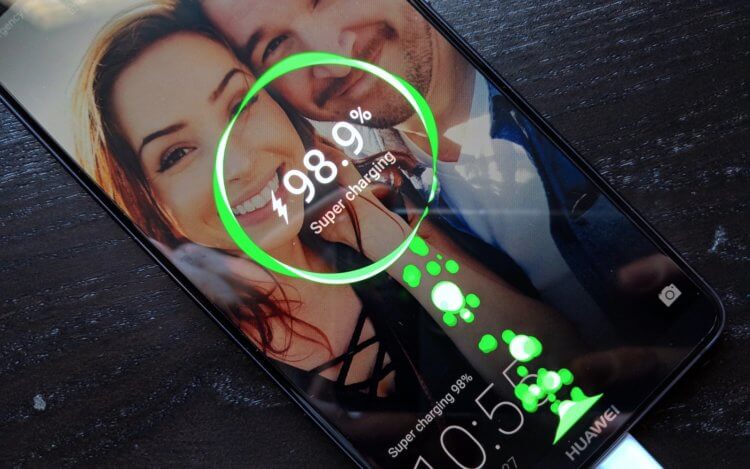The battery is perhaps the most vulnerable component of any smartphone, which even the display cannot compete with. After all, if the display does not wear out over time, unless it is broken, then the more charging sessions the battery goes through, the worse it will hold energy. Some users have already got used to this and now consider the battery solely as a consumable, but most are still not ready to put up with the need to service their smartphones. Therefore, Huawei added a special technology to the firmware of branded devices, which will minimize the negative impact on their batteries.

Smart charging prevents premature battery wear
The technology in question is called Smart Charging Mode. That is, it is a kind of smart mode that allows you to extend the life of the battery, preventing damage and loss of effective capacity from misuse. The operation of the mode is based on artificial intelligence, which allows it to study the user's habits in charging the smartphone, calculate the time that the device spends at the outlet, and based on this data, calculate the charging speed, changing it up or down.
Does fast charging harm

Slow charging harms your smartphone much less than fast charging
Of course, the mode cannot make the charging speed higher than that provided by the manufacturer, and it is not intended for this. The goal pursued by the developers Huawei was, on the contrary, to reduce the speed at the moments when the smartphone spends a lot of time on charging. This usually happens at night. Users put the device on charge before going to bed and take it off only in the morning. As a result, it charges in an hour and a half, and the rest of the time it simply maintains a 100% battery charge, which has a negative effect on it.
The fact is that all the time while the smartphone, being charged, is connected to the outlet, it experiences micro-loss of energy, which it has to constantly replenish. If the unit is left at the outlet overnight, the effect will be negligible, but if this continues on a regular basis, the battery will begin to degrade much faster than if the unit was disconnected from the mains immediately. And the smart charging mode allows you to charge your smartphone not quickly, but with a low current all the time it is at the outlet.
This mode works in the same way for Apple. The company added it to iOS 13 and called it Optimized Charging. It also calculates the time of the charging sessions and effectively slows down the current so that iPhone, which was left at the outlet overnight, is charged in time for the morning. This prevents premature degradation of the battery, allowing it to last longer. And since iPhone start to slow down if their battery wears out, the benefits of Smart Mode become invaluable to them. But if the Apple mode supports all iPhone compatible with iOS 13, then Huawei still has it only in Mate 30/30 devices Pro and Honor V30.
How to properly charge your smartphone

Even Elon Musk believes that there is no need to charge the battery up to 100%
However, the smart charging mode from Huawei will have one more function besides deceleration. Judging by the description, it will allow, in principle, to block the supply of energy when the battery reaches 80%. It's a cool idea that the Chinese probably got their hands on from Tesla. Elon Musk has repeatedly said that charging any battery to 80% on a regular basis has less negative impact on it than if it was charged to 100%. That is why the Tesla app has a special function that allows you to set a limit after which charging will automatically stop.
While it seems that no smartphone manufacturer other than Huawei has implemented the same feature yet, independent developers have long been offering apps to automatically stop charging. Personally, at one time I used the AccuBattery application (download), which not only offered the function of setting limits, but also recommended not to charge the battery more than 80% at a time in order to minimize the negative impact and delay its aging. However, due to the fact that I started using AccuBattery only in the third year of using my smartphone, I did not notice a positive effect from its work.
